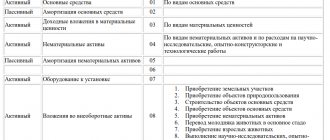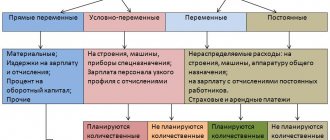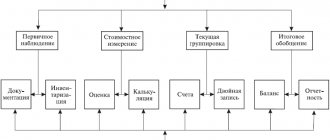A significant part of cargo transportation is services provided by transport companies or individual entrepreneurs. To do this, the latter buy or rent the necessary equipment. A prerequisite for such activities is the maintenance of accounting for cargo transportation in accordance with the requirements established by Russian legislation.
Our company invites transport organizations and individual entrepreneurs to cooperate, offering comprehensive accounting services. The main advantages of outsourcing accounting are the combination of affordable cost with highly qualified performers. The result is the absence of problems with fiscal authorities at reasonable costs on the part of the customer.
Features of cargo transportation accounting
The provision of services by transport organizations or entrepreneurs is a specific type of activity. It has several features that are taken into account when accounting for cargo transportation. The most important legal nuances are:
- despite the transfer of cargo, ownership remains with the owner;
- the cargo transportation route is developed by one of the parties to the transaction and agreed upon with the other;
- the payer of expenses for insurance and customs clearance of goods is established by contractual obligations;
- organization of warehousing is allowed, which is paid either by the owner or by the transport company;
- services are accompanied by the mandatory execution of a set of documents, including a consignment note, a forwarding note, etc.
Accounting in transport organizations
Specifics of accounting for transport companies
From a legal point of view, a carrier is a service provider, and their provision should be correctly reflected in documents and accounting.
At the same time, the specifics of how business transactions will be recorded on paper are determined by the transportation format. Freight or passenger transportation can be an independent service or complement the main activity of the enterprise. Most often we are talking about product delivery. However, in documents, transportation is always distinguished as a separate type of work, and therefore income from it is registered through account 62. Value added tax passes through account 90.
If the delivery of goods is included in their price, transportation costs are recorded in accounting differently. It is assumed that the seller is responsible for transportation, and formally it cannot be considered a separate type of service. In this case, the costs of providing the delivery service are equal to commercial expenses. In accounting, such business transactions are recorded through accounts 90 and 44.
How to correctly account for transport costs
Correct reflection of costs in accounting is important for an enterprise, because errors in it distort the tax base. This can lead to large fines and other sanctions from regulatory authorities. To minimize risks, it is enough to keep records correctly. In this case, special attention should be paid to reflecting the transport that the enterprise uses.
Own transport should be reflected in the balance sheet. But if the company rents transport, it is reflected on the balance sheet. Sometimes difficulties arise with taking into account vehicles that are leased. They can be reflected in the balance sheet of the enterprise. But if they are already taken into account on the balance sheet of the person leasing the vehicle, they should be registered behind the balance sheet.
A lot of carriers' costs are associated with maintenance and lubricants. Particular attention should be paid to ensuring that materials are written off correctly. In this matter, you should trust qualified professionals, since standards are established for individual industries, and they change over time. Accordingly, it is necessary to take into account changes in these norms. It happens that the carrier's federal acts are not very relevant. Then you can develop your own standards for writing off materials; the main thing is that they do not contradict the law.
Another inevitable cost item is seasonal replacement of tires. Accounting should reflect not only the purchase of summer and winter tires, but also their release from the warehouse and acceptance for storage. Mandatory expenses of carriers may also include the costs of storing cargo, driving on toll roads, loading, cleaning cars and much more.
Possible tax regimes
An equally characteristic feature of cargo transportation is the choice of one of three tax regimes - OSNO, simplified tax system or UTII. Each has a set of advantages, which are easiest to understand through a comparative analysis using several criteria given in the table.
| Evaluation criterion/Tax regime | General | Simplified | Imputed income |
|
|
|
|
|
|
|
|
|
|
|
|
|
|
|
|
|
|
|
|
|
|
|
|
|
|
|
|
Combining SST with other taxation systems
This rate is used in the cases listed in paragraph 1 of Art. 164 Tax Code of the Russian Federation. In particular, this is the transportation of natural resources (oil, gas) in Russia and abroad and international transportation of goods.
UTII (single tax on imputed income) is a taxation system that is most often found in the field of cargo transportation.
At the end of the year, you need to independently calculate the balance of personal income tax payable (advance payments from the income received) and transfer it to the budget before July 15 of the next year.
Why UTII is beneficial for cargo carriers 1. “Imputed” reduces the tax burden: to calculate the tax, a physical indicator is used, such as the number of vehicles, and not the total profit, that is, you can increase volumes without increasing taxes. 2. Exemption from cash registers for cash payments: instead of a cash receipt, an individual entrepreneur can issue a sales receipt or a receipt.
The general system is not subject to any restrictions on types of activities, number of employees, income received, etc. As a rule, most large companies work on OSNO and, as VAT payers, also prefer to work with those who pay this tax.
For me, too, a very pressing question, the situation is similar. I also work with clients, but so far without VAT (USN 6%), clients are starting to demand that invoices be issued including VAT, tell me how to do this correctly, and what threatens with the transition to VAT. If we take the previous example of 12,000 rubles, then it is not clear with the payment of tax, who pays it? the client or us (as intermediaries).
Individual entrepreneurs that belong to small and micro enterprises may not use the double entry method in accounting, that is, do without simultaneous registration of the amounts of each transaction on the debit and credit of interrelated accounts.
In addition, if there is an intermediary agreement, the seller of the goods, purchasing these services on his own behalf, acts as an agent (commission agent) for transport services, therefore, in addition to the invoice for the goods, he also issues an invoice for this service to the buyer.
Advantages of outsourcing accounting for a transport company
Selecting a favorable tax regime is a difficult task, the solution of which greatly depends on the efficiency of a transport individual entrepreneur or company. Experts will make the right choice. Additional advantages of accounting outsourcing:
- no expenses for creating your own accounting department and equipping work places for full-time accountants;
- confidentiality guarantee;
- professional consultations with specialists;
- financial responsibility for the quality of consulting services provided;
- low cost of accounting combined with the qualifications of the employees involved.
We are ready to develop a personal commercial offer for you. To receive it, just contact a company employee and answer a few questions about the specifics of your business.
Example of VAT payment on basis for cargo transportation
UTII - the use of “imputation” is permissible if the number of cars in the fleet does not exceed 20 units, and the number of employees is 100 people. A tax rate of 15% is paid on imputed income, calculated based on physical indicators and established profitability values for each industry. The list of industries that have the right to use UTII is approved by municipal authorities.
The presence of orders establishing spending standards is checked by the Federal Tax Service as documents that allow determining the validity of taxation. Cost rationing is applied by enterprises that provide transport services or have vehicles for their own transportation of goods or employees.
When filling out an application for registration, the future entrepreneur must indicate OKVED codes reflecting the direction of future activity. From 2021, cargo transportation is reflected using codes 49.
Methods of maintaining accounting and tax records in an organization providing transport services are fixed in the accounting policy. The cost of transport services depends on the composition of costs. Main types of expenses reflecting the specifics of the activity:
- Depreciation of fixed assets. This is the distribution of the cost of cars through a monthly write-off to the cost of services, depending on the established depreciation rates.
- fuels and lubricants. Fuel costs reflect the cost of purchased all types of fuel used for the needs of a motor transport enterprise. Fuel and lubricants are calculated according to standards taking into account the mileage of the vehicle.
- Spare parts and repairs. The cost of all materials consumed during the repair and maintenance of transport. This includes car tires, tools, fixtures, inventory and other low-value wearable items. It is possible to write off these costs without creating a reserve for repairs.
- Labor costs , which include the amount of accrued wages and deductions for insurance premiums. These costs can be direct if wages are paid to employees who are directly involved in providing the services. Costs can be indirect if the organization’s management personnel are paid.
- Motor transport insurance. This can be compulsory MTPL insurance, or voluntary. Insurance of the risk of loss (destruction) and damage to the car is carried out under a voluntary property insurance agreement (CASCO agreement).
- Other costs reflect the amounts of accrued taxes (transport tax), payments for maximum permissible emissions (discharges) of pollutants, business travel costs, payments to third-party organizations for fire and security guards, for training and retraining of personnel, interest on loans, etc.
CHOOSING A TAX REGIME AND ACCOUNTING ORGANIZATION OPTION FOR A CARGO CARRIER
Freight transportation is a common type of activity. Despite its apparent simplicity, this type of activity requires a lot of “paper” work. This “paper” work can be divided into three areas:
- registration of permits;
- preparation of documents for the provision of services;
- preparation of documents related to accounting and taxation.
Today, activities in this industry are structured differently. There are companies that act as “operators” of logistics, accepting orders for the transportation of goods and directly hiring carriers to transport goods. Some of these operators have their own fleet of vehicles. Often, our own fleet of vehicles is not enough and we still have to hire carriers with our own vehicles. However, carriers also exist in various legal forms.
Thus, the carrier can be a legal entity (limited liability company (LLC)) with drivers on staff and vehicles owned or leased. The carrier can also be an individual entrepreneur (IP) who owns a car and provides transportation services personally. An individual entrepreneur may own several units of motor transport (vehicles) and hire drivers to provide transportation services.
Today, many business entities operating in the field of cargo transportation are registered as individual entrepreneurs. This is convenient and allows, in some cases, to significantly reduce tax costs. And the specifics of the business allow you to work effectively as an individual entrepreneur.
As for the choice of taxation regime, this is an individual question. The priority system is determined, first of all, by the conditions of business activity. Transport usage patterns also play a role.
In the field of cargo transportation, there are three options:
- Use of your own vehicles.
- Use of machines owned by individual entrepreneurs for temporary use.
- Working with a combined vehicle fleet (some of the vehicles are owned, some are for temporary use). In this case, it is also possible to attract drivers with their personal transport.
To carry out cargo transportation, it is important to choose the right OKVED when registering a business. It should be taken into account that renting out your own transport does not apply to this type of activity.









